Uniting traditions with love: Columbus wedding features Indian, African, American cultures
When Rupal Ramesh Shah and Anup Kumar Kanodia decided to get married, they knew they wanted to infuse their wedding with the cultures – Indian, East African and American – that had nurtured them.
Kanodia, 46, is an Indian American doctor who was raised Hindu in Akron. Shah, 40, is a public health professional who hails from the Indian Gujarati community of Tanzania — a group who immigrated from western India to East Africa during British rule in the late 19th and early 20th centuries. She moved to South Carolina at age 16, and she is an adherent of Jainism, an Indian minority religion that emphasizes non-violence and vegetarianism.
The couple, who live in the Brewery District, tied the knot during a four-day wedding held at the Hyatt Regency in Downtown Columbus from June 8-11. Around 450 guests arrived from far corners of the globe — including India, Kenya, Australia, Germany, the U.K., Haiti, the Bahamas and Canada.
“I do love weddings … I have actually in the last 20 years attended 50 weddings,” Shah explained to guests during dinner on the first night of festivities. “I’d leave each one with an idea of what I wanted mine to look like.”
Hindu culture: Five things you should know about the Hindu festival of Holi
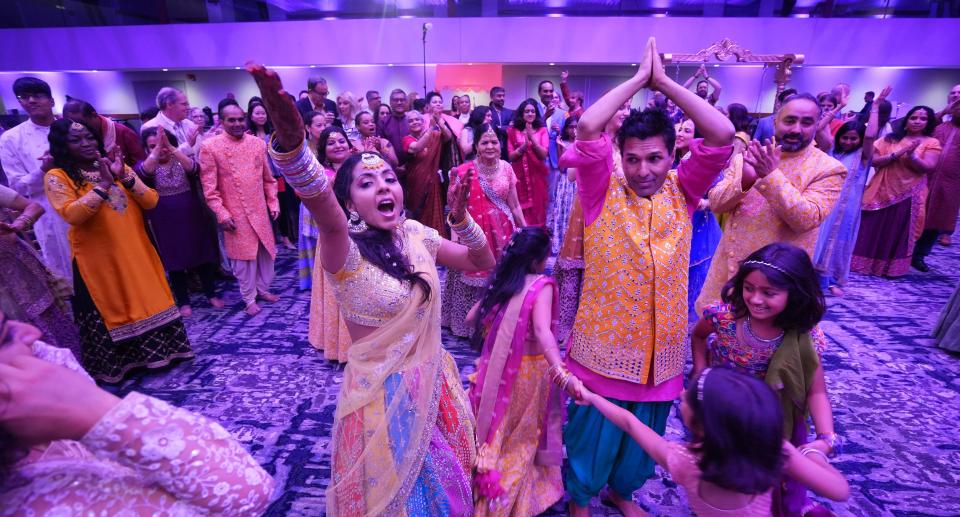
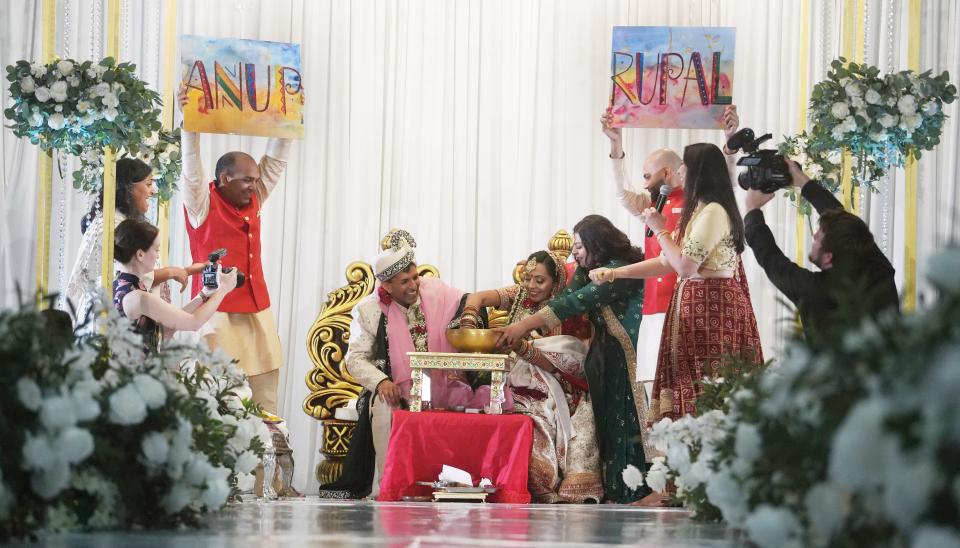
Creating a multicultural experience was important to the couple.
“We wanted to take the loving parts of all of our traditions — the American, the Indian and the African parts. But we're trying to remove anything that we feel is not loving,” Kanodia told The Dispatch before the wedding began. He explained that they had made tweaks — like hiring a female Hindu priestess, who also officiates LGBTQ+ ceremonies — to make the day as inclusive as possible.
A long-distance romance
Kanodia and Shah met in 2020 after Kanodia’s auntie, Shobha Khandelwal, introduced them. At the time, Kanodia was practicing medicine in Greater Columbus and Shah was splitting her time between Portland, Maine, and Haiti, where she worked in public health. Despite physical distance and COVID-related travel difficulties, their courtship blossomed and Shah eventually moved to Ohio.
As a Gujarati Jain, Shah came from an entirely different community than Kanodia, whose parents immigrated from the Indian state of Rajasthan. But their wedding planner, Nadira Merali, who flew in from Atlanta, said Indian American marriages are increasingly crossing such caste and community lines.
“Nowadays, I feel like we're in different times,” she told The Dispatch.
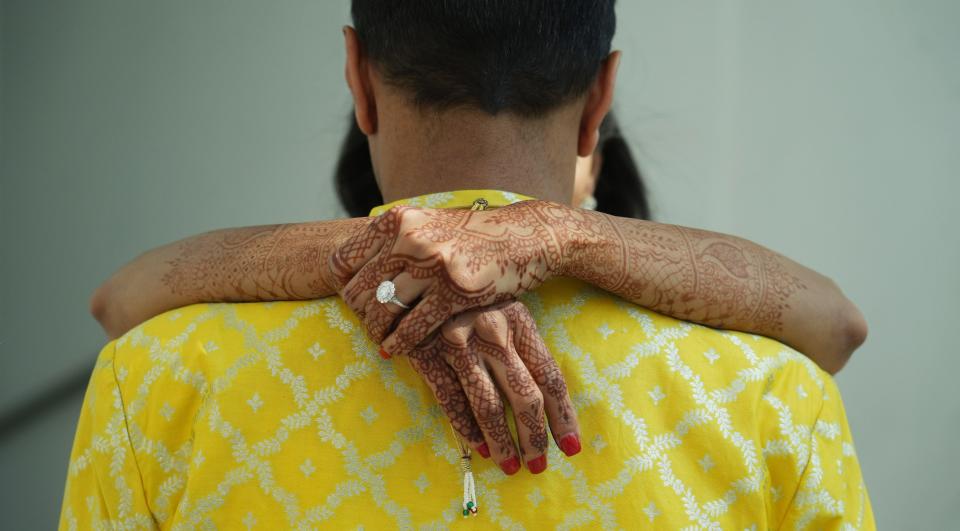
Merali said her business, Envi Event Planning, organizes around 20 Indian American weddings per year, ranging in cost from $250,000 to over $1 million.
The syncretism of Shah’s and Kanodia’s wedding reflected the multicultural milieu in which Shah grew up, near the base of Mt. Kilimanjaro in the Tanzanian town of Moshi.
“(Moshi) had a very integrated culture … the Hindus, the Sikh, the Shia and Sunni Muslims, the Lutheran and Catholic communities lived together,” Shah’s father, Ramesh, said.
“My children would go to ceremonies and parties of their friends who were of different religions. … The most important thing I learned … is there is only one God. You pray in whatever way you feel like,” he said.
Multicultural connections: A mosque, a synagogue and an unlikely friendship that kindled Columbus' interfaith movement
Bridging the gap between 'the old tradition and the modern'
On the second day of the wedding, guests attended a Ganesh Puja, or ritual offering to the elephant god known as the remover of obstacles. Priestess Shivangi Bhatt presided over the ceremony in Sanskrit —an ancient language today used only for religious rites — but she also explained the meaning in English as she anointed a statue of the god in oil.
Priestesses are rare in Hinduism, which traditionally recognized only men to complete such rituals.
“I want to share … with people of my generation and younger generations, so they don't lose that connection to these beautiful rituals that are really relevant today — if you just understand them,” Bhatt, who flew in from San Diego, and whose day job is in health informatics, told The Dispatch. “I'm trying to bridge that gap between the old tradition and the modern.”
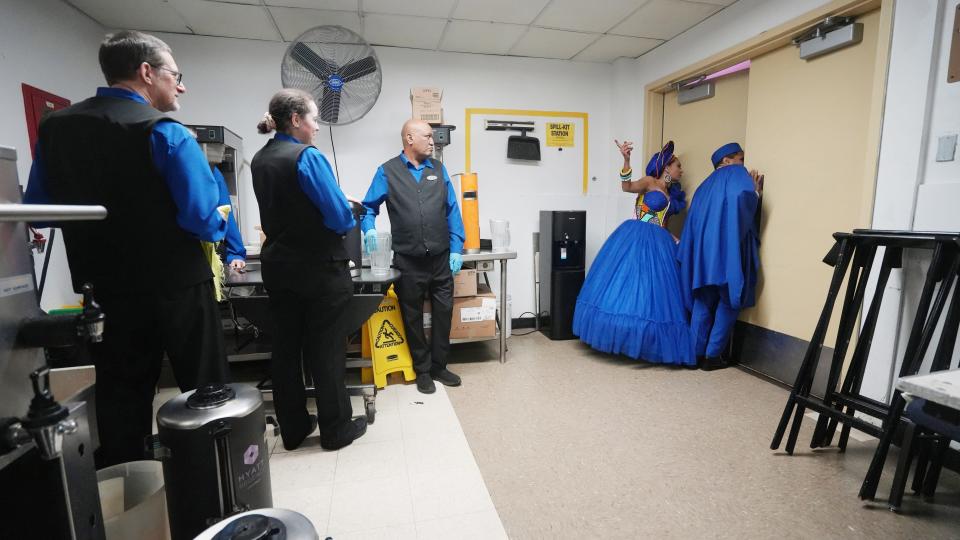
More photos: Anup Kanodian and Rupal Ramesh Shah's wedding like no other
Moments later, with cheerleader-like flair, a group of the couple’s brothers and uncles hoisted Shah and Kanodia into the air as part of a Jain ritual known as Mandvo. The gesture indicates that, no matter what hardships come the couple’s way, they can always depend on support of family.
The wedding’s musical performances and playlists drew on various traditions. One evening featured a live performance of garba, a vibrant Gujarati folk dance. Another night, the couple danced to Swahili music as Shah wore an East African outfit designed by Kate Mayeye Okaranime, a Kenyan designer who counts African celebrities like Nigerian Afropop singer Yemi Alade among her customers.
One meal was catered by Wahidul Islam, a Muslim chef whose restaurant Clove Indian Bistro is located on Columbus’ Northwest Side. Another meal, catered by the Riziki Swahili Grill on Columbus’ Northeast Side, featured Tanzanian dishes made from sweet potatoes, plantains and coconut.
On the morning of the nuptial ceremony, Kanodia mounted a white horse bedecked in an embroidered headdress for the baraat — a festive procession in which the groom’s family symbolically takes the bride away from her parents. Guests danced to Bollywood and upbeat R&B.
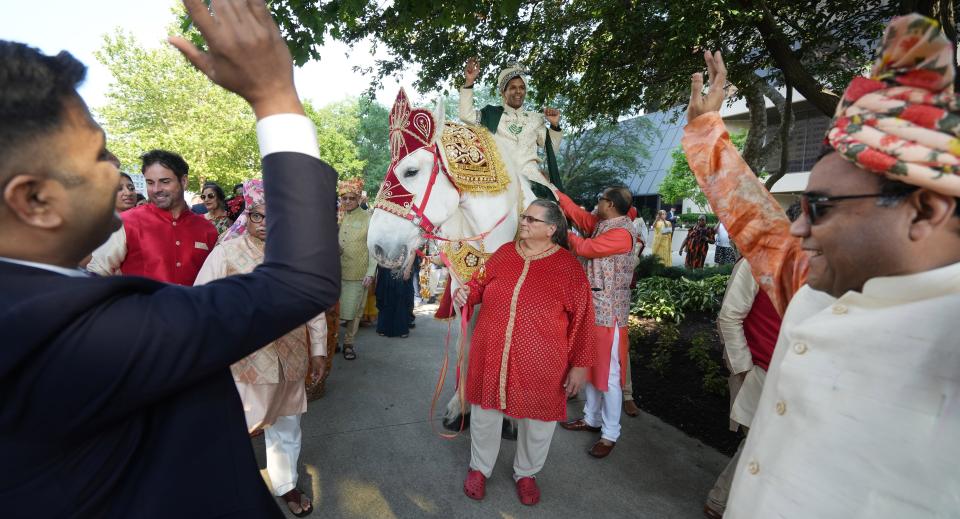
About an hour later, the couple were formally wed in a ceremony in which they walked in their bare feet four times clockwise around an agni, or sacred fire, set up on a stage.
For many guests, the wedding was as much an opportunity to explore new cultures as it was a chance to celebrate the couple.
Priti Shah, a guest (no direct relation to Rupal) who traveled from Nairobi to attend the wedding, said she was happy to see African elements featured prominently along Indian traditions.
“This is the first time in my life I’m seeing a lady priest,” she added, referring to Bhatt. “I'm really happy and stunned to see a female priestess coming in to do the ceremonies.”
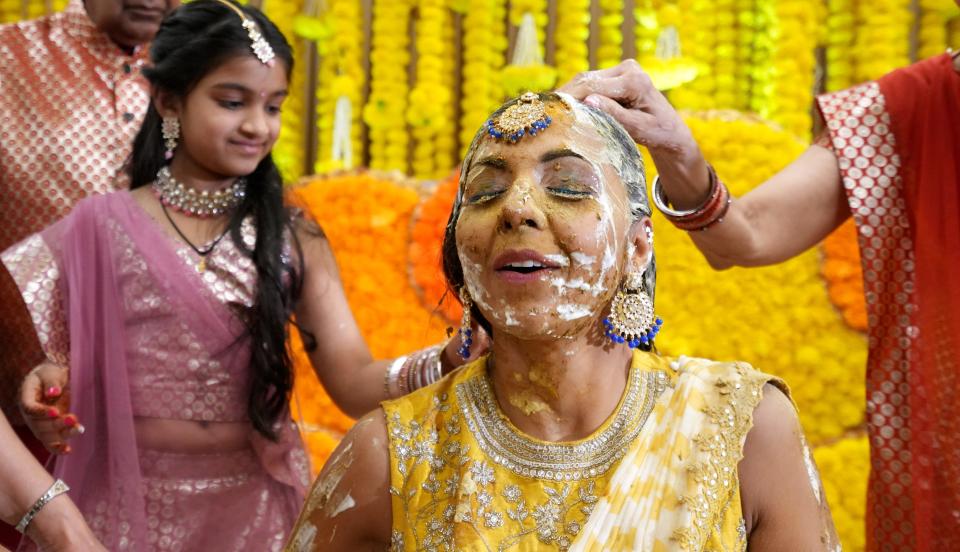
Barbara Symonette, a friend of Shah’s who met her while running the Rio de Janeiro marathon, said she traveled from her home in the Bahamas for the wedding.
“It's just been so rich — rich in culture and history. Some persons just lose that when they move from their native country, but you can see it’s still here,” she said.
Peter Gill covers immigration, new American communities and religion for The Dispatch in partnership with Report for America. You can support work like his with a tax-deductible donation to Report for America at: bit.ly/3fNsGaZ.
This article originally appeared on The Columbus Dispatch: Four-day Columbus wedding features Indian, African, American cultures

